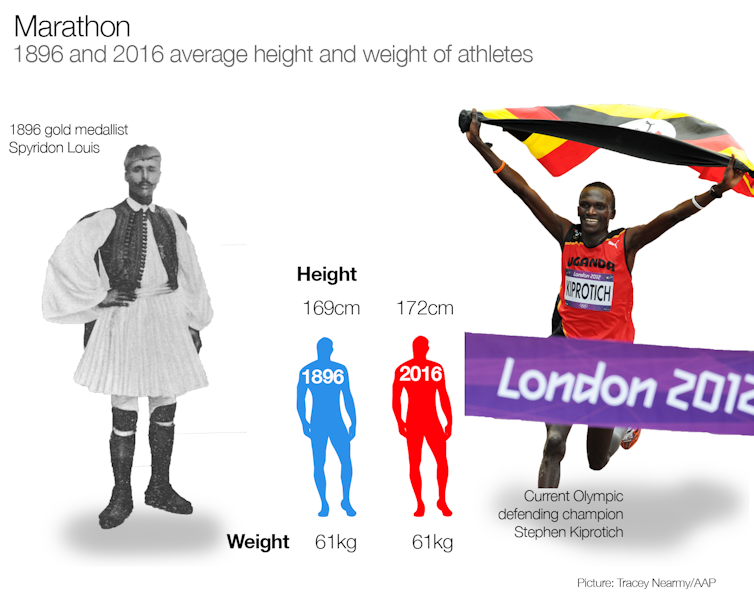Experience of Youth Sports during Past, Present and Future from Special View of Anthropology of Sports
Download PDF
There are four aspects of changing youth sports during past 120 years which influenced the view of Anthropology of Sports and the limits of human athletic performance: 1. Higher quality of talent identification and selection. 2. Higher quality of training especially for children and youth and in contrast to adult sports training.
Paper Youth Sport Herm 2020.06 S S Dempo College Goa
Scientific International Conference on Physical Education & Allied Sciences Panaji – Goa India 2020.
Experience of Youth Sports during Past, Present and Future from Special View of Anthropology of Sports
Klaus-Peter Herm
Abstract
- are four aspects of changing youth sports during past 120 years which influenced the view of Anthropology of Sports and the limits of human athletic performance: 1. Higher quality of talent identification and selection. 2. Higher quality of training especially for children and youth and in contrast to adult sports training. 3. Higher loading, specific coordination training and consequent warm up as well as stretching programme before and after training loading from beginning of children and youth sports. 4. Better technical equipments (online information service with sensors, tablets, Smartphone, GPS and trend to modern artificial intelligence with using of technology to revolutionizing sports training). Otherwise the changing of in living conditions and the modern documentation of training and faster realisation and consideration of the results of somatic and performance diagnostic shows that you also need like before exactly norms for training, somatic development and methodical ways in different sports kinds. What good the current information if you don’t know what means good or bad). It is shown the problem of early high specialisation as problem and opposition for young sports men in relation to Anthropology of Sports. For the future all sports kinds need multiple possibilities of talent selection if the experiences shown for years the difficulties and success of youth sports. The greatest problems we found of course for the health of young sportsmen according overloading, false loading, and way too early specialisation, no consideration of biological development like biological age, somatic type and body composition (fat, muscle and bone mass), Growth velocity and Growth Dynamic. It is demonstrated how developed this problem during past, present and for the future and the different possibilities of talent selection, children and youth training as well as the health biological development for a successfully sports development of children and youth sportsmen. Modern aspects of Talent selection – a process from youth to adult sports means: Get sports ahead. It includes research, consulting and sports project management.
It means: Active Sourcing, Data-Driven-Recruiting, On-Boarding-Processes and personal advice in different sports kind. It is to have a look to Requirement analysis, Sports- and competitive analysis, Data-Driven Recruiting, Talent Pool and network, Fit –Add Analyses – all with the most modern examination methods. Important is Long-Term Development, Not Short-Term Success!
Key words: Anthropology of Sports, Talent Selection, Biological development, Trainings Loading, Children and Youth Sports
Address of the Author:
IBS _ Institut für Bewegung und Sportanthropologie D-32549 Bad Oeynhausen Kortenweg 7 Fon+49+ (0)172 1933059 e-Mail: ibs.herm@t-online.de PD Dr. habil. Dr. h.c. Retd. Professor KLAUS-PETER HERM GERMANY
1. Introduction
It’s demonstrated the time of more than the last 120 years under the view what is happened special for Youth Sports during Past (time between 1896-1945), Present (time between 1945-2020) and Future (up 2020) and the big problem “talent selection” under the special view of Anthropology of Sports for the national (Germany and India) and international area, that means to look according the time distances of the Modern Olympic Games since Athens 1896 - as a guideline. In Germany GutsMuths was one of the first which wrote the book during the year 1793 “Gymnastik für die Jugend” (Gynastics for youth).
2. Problems
No discipline epitomises the Olympic motto of citius, altius, and fortius (faster, higher, and stronger) better than athletics. Modern athletes are very high specialised like running times, jumping heights and throwing distances that would have seemed impossible during the past. So in 1896- during the beginning of Olympics the most Athletes were All-rounder. With specialization and differentiation of spots competition started the differentiated selection. The problem exists up to now also for children and youth training. With beginning of talent identification and selection we can recognize that it is very important to realize an all-round training with looking to the early specialisation as early as possible. But attention: the most important point is to have fun and health with all sport!
2.1. Problems Past
Normal Life: If we look back to the past one hundred years ago we have the example to see one big problem for mankind. It was the Infant and Child mortality rate (Table 1, Figure 1).
Table 1: Infant mortality (%) during the last 100 years in Germany and India (Herm 2019)
| Country | Year | 1920 | 1950 | 1990 | 2017 |
| Germany | 14.0 | 5.5 | 0.85 | 0.37 | |
| India | 40.0 | 25.0 | 12.6 | 3.94 |
You can recognize in table 1 the comparison of Infant mortality (%) during the last 100 years in Germany and India (Herm 2019). It is shown that we have had in Germany with 14 percent much lower mortality than India with 40 percent. For talent selection it means that we have according the health status of the children in Germany nearly four times better fundamentals than in India during the deep colonial time. The Republic of India has caught up strongly to this day with recent 3 percent in relation to Germany with 0.37 percent during the year 2017. In Figure 1 is shown the share of children (born alive) who die before they are five years estimates up until 1945 and UN Population Division from 1950 up to today.
Figure 1: Child mortality rate (https://commons.wikimedia.org/w/index.php?curid=78806260)

Child mortality rate: Shown is the share of children (born alive) who die before they are five years estimates up until 1945 and UN Population Division from 1950 to today (Our World in Data, Max Roser - https://ourworldindata.org/child-mortality; https://www.gapminder.org, CC-BY https://commons.wikimedia.org/w/index.php?curid=78806260)
Why did I show these past problems? You need healthy normal developed children for sports!
More than hundred years ago already Cramton (1908) wrote the up to now also for sports children significant statement: “All observations, records, and investigations of children, whether pedagogical or medical, social or ethical, must regard physiological age as primary and fundamental basis”.
How all know, the Ancient Games, Olympia was at the centre of Greek civilisation!
“At its heart the Ancient Olympic Games was a religious festival held in a religious sanctuary,” and that was usually for adult athletes “it was not just a matter of playing”, so Paul Christesen wrote: And central to this concept was the site itself. Today sports play a role in society as a whole, both in high performance sport and in leisure and health sport with different tasks.
If we look back to the first Olympics 1896 in Athens the Germany’s Carl Schuhmann (Figure 2) was at the age of 26 arguably the brightest star of Athens 1896 Competing in four different sports at the same edition of the Games gymnastics, athletics, weightlifting and Greco-Roman wrestling, he won four gold medals, more than any other athlete at the inaugural modern Games. He was a talent like you say today versatile athlete- All-rounder!
He caused a special sensation with the anthropometrical body height of 163 cm!
Figure 2: Carl Schuhmann (age 26 years; body height: 163 cm)
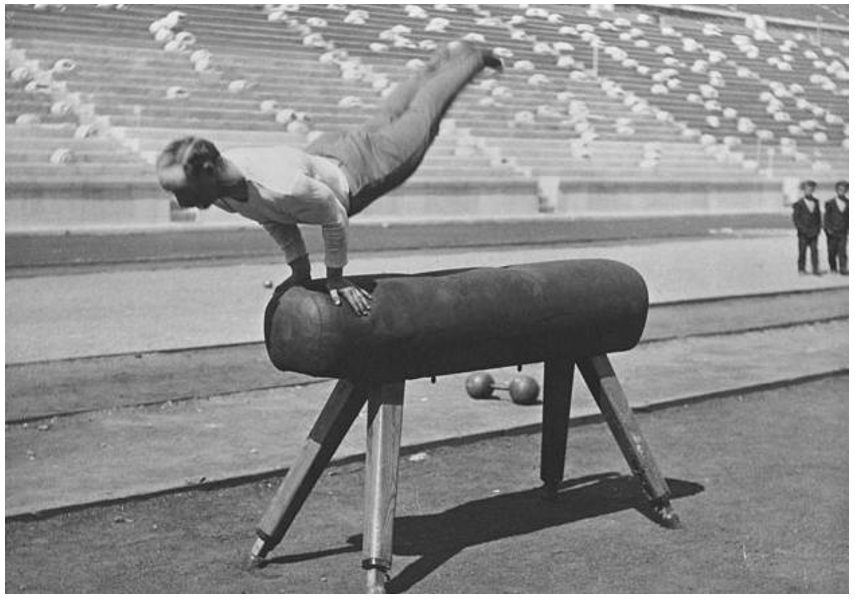
https://upload.wikimedia.org/wikipedia/commons/7/73/1920_olympics_poster.jpg
For India we have the first Olympic Medals during the Olympics 1900 in Paris. It was Norman Pritchard (later actor Trevor) is a "controversial" Olympian in that he is claimed by both Britain and India as having competed for them at the 1900 Olympics with a calendar age of 25 years. Pritchard was a member of an old colonial family and although he was born June 23rd 1875 in India, West Bengal –Kolkata. The Indian Olympic historian, Gulu Ezekiel, and the IOC claims Pritchard based on his birth and the fact that he lived in India for many years. During the Olympics in Paris 1900 he won as Indian, data approved also from IOC, two Silber Medals (200 m – Silber 22.8 s and 200 m hurdles – Silber 22.8 s). In its archives and website, continues to credit his two medals to India. India was under British rule at the time. (The Telegraph, – India 7. August 2008). That means: we did never found in former time some ideas about talent selection in India.
Figure 3: Norman Pritchard 1900 (later actor in USA as Norman Trevor) (File .jpg Wikimedia)
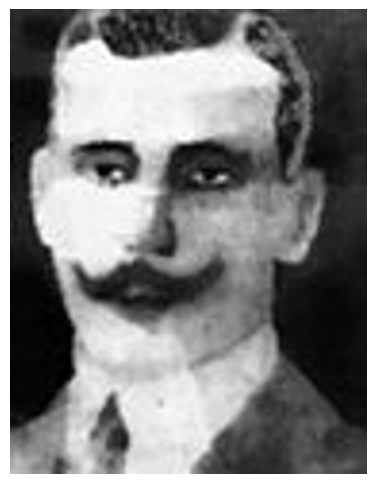

Table 2: Olympic medals of India
|
Sportart |
Gold |
Silver |
Bronze |
total |
|
Hockey |
8 |
1 |
2 |
11 |
|
Shooting |
1 |
2 |
1 |
4 |
|
Athletics |
— |
2 |
— |
2 |
|
Wrestling |
— |
1 |
4 |
5 |
|
Badminton |
— |
1 |
1 |
2 |
|
Boxing |
— |
— |
2 |
2 |
|
Weightlifting |
— |
— |
1 |
1 |
|
Tennis |
— |
— |
1 |
1 |
|
Total |
9 |
7 |
12 |
28 |
Since 1920 India participated constantly during the Olympic Summer Games and ten times during the Olympic Winter Games.
Figure 4: VIIth Olympiad- Anvers 1920

The 1916 Summer Olympics (German: Olympische Sommerspiele 1916), officially known as the Games of the VI Olympiad, were scheduled to be held in Berlin, German Empire, but were eventually cancelled due to the outbreak of World War I.
Because of the role in the First World War (28th of July 1914-11st of November 1918) Germany, Austria, Bulgaria, and Turkey were excluded from the VII Olympiad in Antwerp 1920.
During the twenties of the 19th century in Europe and North America we could found an expressive social development. They were known as the Golden Twenties! And: Nobody knows whether the 2020s will trigger such euphoria as 100 years ago!
Berlin returned to Olympic bidding in 1931 for the right to host the 1936 Summer Olympics, the last Olympics before the outbreak of World War II.
And India was especially since the Olympics 1928 Amsterdam up to the Olympic Games 1980 in Moscow Gold Medal Winner of the Hockey games. Now India fights to hold the top ten of the world. The first Indian Alpine Ski downhill athlete participated 1964 as Olympic Team during the Winter Games in Innsbruck/ Austria .
Sports Life: In India and Germany between 1900 and 1920 we found in de literature no talent selection for youth if the most athletes came for adults competitions in sports! There was alone the note in the literature that during the twenties first time youth competitions were organized like “Youth Sports Games” in relation to the Olympic Games. Since 2010 in Singapore India participate at the Olympic Youth games. In Germany developed Physical Education (German: Körperkultur und Sport) also for children.
Figure 5: Movement theory catch ball and throw ball for children during the sixties.
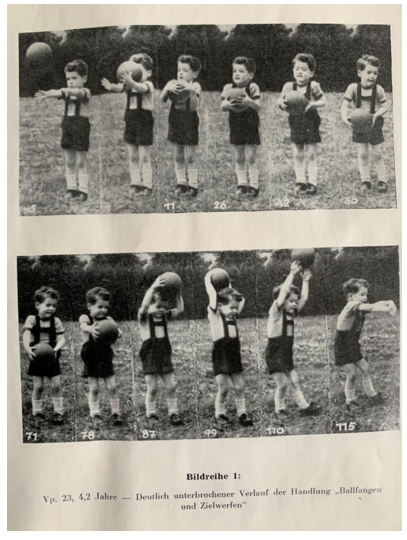
Figure 6: Movement theory catch ball and throw ball for adult during the sixties.
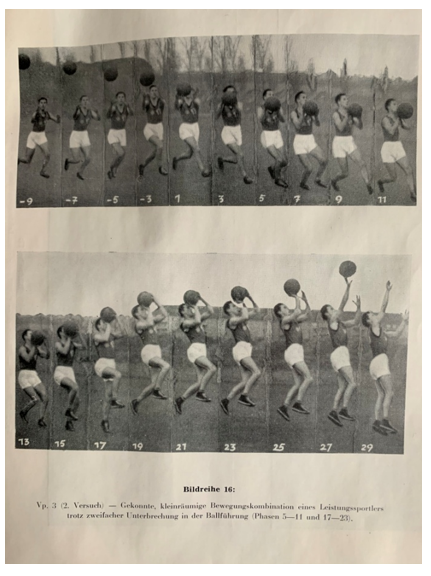
The big step also for Anthropology of Sports and Auxology started with the examinations from Tanner during the sixties. 1920 James M. Tanner was born, he died 2010. He was a worldwide well known and excellent scientist of Auxology between 1960 and 2010. The most important works about: A History of the Study of Human Growth and Worldwide Variation in Human Growth. And:
Figure 7: The Physique of the Olympic Athlete, George Allen and Unwin, Ltd., London, 1964 are well known.

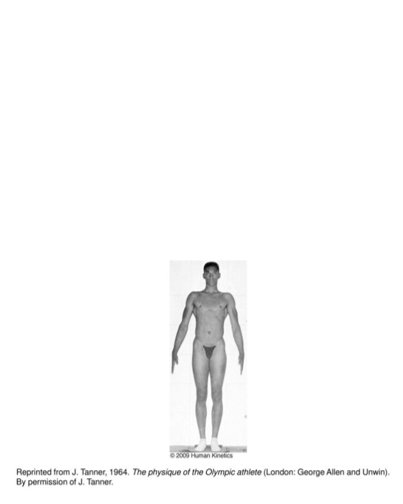
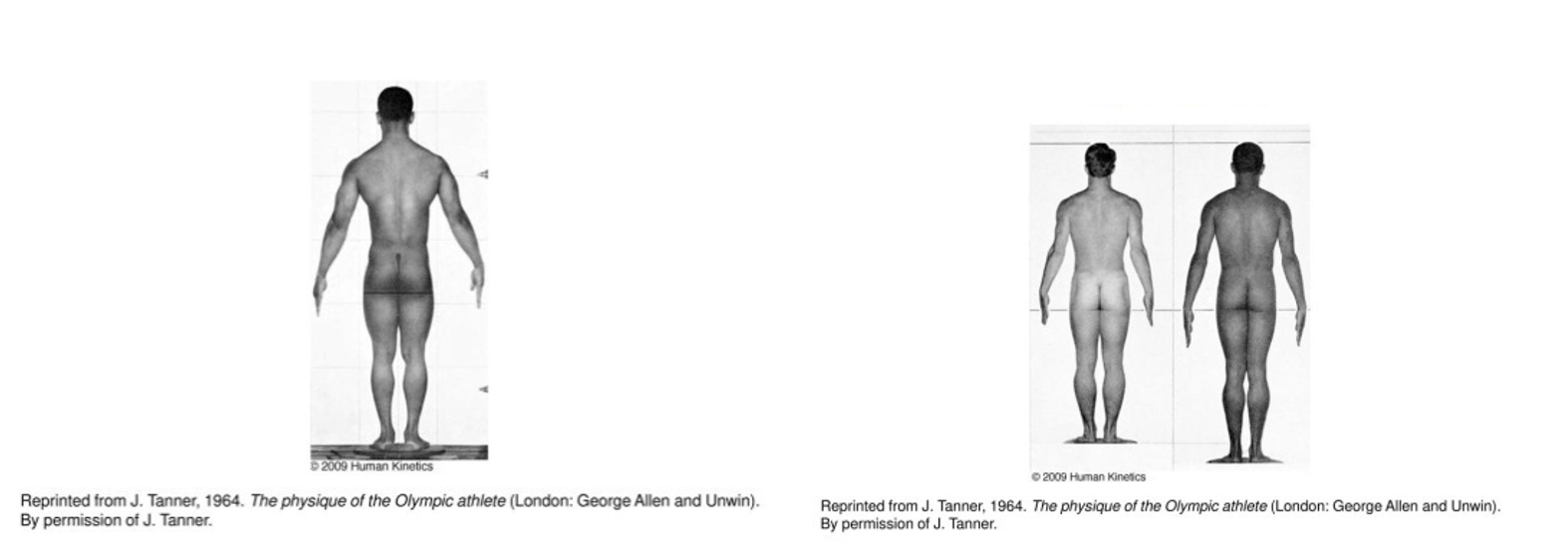
Since organizing the First Advanced Course of Kinanthropometry was organized at NIS Patiala 1987 under Leading from Dr. Sodhi and Dr. Herm– with Guidance of Dr. C.M. Muthiah (1932-2019) (which has finished his Doctoral thesis 1975 in Germany about talent selection in Athletics during the seventies. Since this time for India Kinanthropometry played a major role (Kaur Talwar, Rajdeep 1910).
2.2. Problem Present
There was beginning after the Second World War with the very fast development of sports and also at first in small special aspects also in children and youth sports. There is given an overview about Modern aspects of Talent selection – a process from youth to adult sports” (Herm 2018, 1920). In the field of Sports Anthropology, Talent identification and selection is connected with “Models of special norms” (Herm 1988, 1993, 2012). In a conclusion it’s written: Modern aspects of Talent selection – a process from youth to adult sports means: Get sports ahead. It includes research, consulting and sports project management.
It means: Active Sourcing, Data-Driven-Recruiting, On-Boarding-Processes and personal advice in different sports kind.
- Requirement analyzes
- Sports- and competitive analysis
- Data-Driven Recruiting
- Talent Pool and network
- Fit –Add Analyses
To find the right candidate in different sports kinds means if he had the right power, endurance, resilience, willed strength for a top performer – for this you need a specially ask technology and different steps for an individual talent finding.
Figure 8: Standardised Photodocumentation for Sportsmen to take anthropometrical measurements from photography ( Herm 1972)
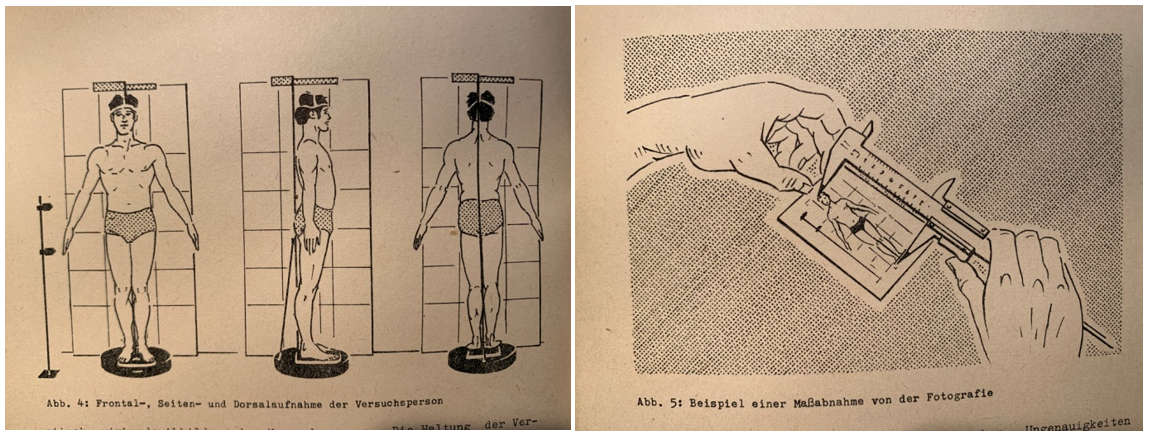
With an international net work and scientifically methods you will find personnel of for your sports kinds. The coach today must be also very automotive with connection to Life Science, Engineering or Digital Business, a little bit finance-specialist, IT-Manager or Marketing-Profile! Search for young professionals, potential carrier and specialists or young experts – for this you need a right feeling and lots experiences.
These performance carrier have an over average high implementation tempo, an extraordinarily will to have success and unprecedented performance level!
And you need a team for sports training, sports medicine, and sports psychology experts of Kinanthropometry and Nutrition.
There are so many aspects for the right talent selection in youth sports:
- Sports Nutrition, Periodic of Training and Sports Performance in Youth Sports
- Sensitive periods of brain during growth and development of children
- The type of sport
- The amount of training you do
- The amount of time you spend doing the activity or exercise
- Which age?
- What influences the energy consumption of the young sports men?
Possible influences factors for the energy consumption are: Anthropometrical Parameter (Age, Gender, Weight, Muscle Mass, Height), Diseases, Injuries, Sports kinds, Trainings terms, Training volumes, Training intensity, Trainings frequency, Trainings fitness, Profession/school level), Climate influences, which kind of food and specific dynamically force, food induce thermo genesis. - Which biological age?
- Which growth dynamic and
- How to realise the high loading during childhood?
Targeted talent management and the systematic selection and promotion of performance-focused means highly motivated junior executives.
One aspect to the question in point 8: Which biological age? You can give if you see the System of selection the sports children:
- Is it possible to have a complete selection all children in all schools?
- Is it possible to organize the first sighting of all children in class 1. 4. and 7. (E.g. during first class Gymnastics, swimming, diving, during fourth class athletics etc.)
- You have to overview the importance of biological age during selection of talented/suitable children for training centers!
For these aspects you have to differentiate
- Biological development groups of children with
- Biologically very much young (or late developed/retarded)
- Biologically young (light late developed/light retarded)
- Normal developed
- Biologically older (early developed or accelerated)
- Biologically very much older (very much early developed or very much accelerated)
- Difference of indeed body height (mm) in relation to the average of the appropriate body development group.
- Difference of indeed body weight (kg/10) to the norm of appropriate body height group
During present time, the greatest problems we found of course for the health of young sportsmen according overloading, false loading and way too early specialisation, no consideration of biological development like biological age, somatic type and body composition (fat, muscle and bone mass), Growth velocity and Growth Dynamic. It is demonstrated how developed this problem during past, present and for the future and the different possibilities of talent selection, children and youth training as well as the health biological development for a successfully sports development of children and youth sportsmen. So are developed methods to estimate “Biological Age”, final stature and Somatotype and others are up to now very important (Fig 1). Modern aspects of Talent selection – a process from youth to adult sports means: Get sports ahead.
Figure 9: Biological Age- Athletics- Sprint- Calendar Age: 13 years
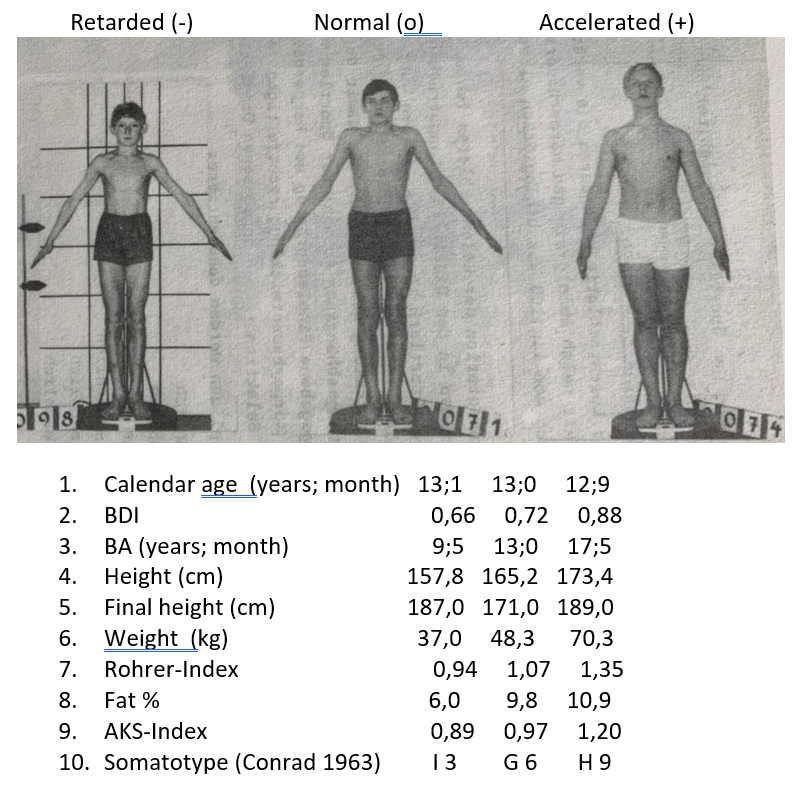
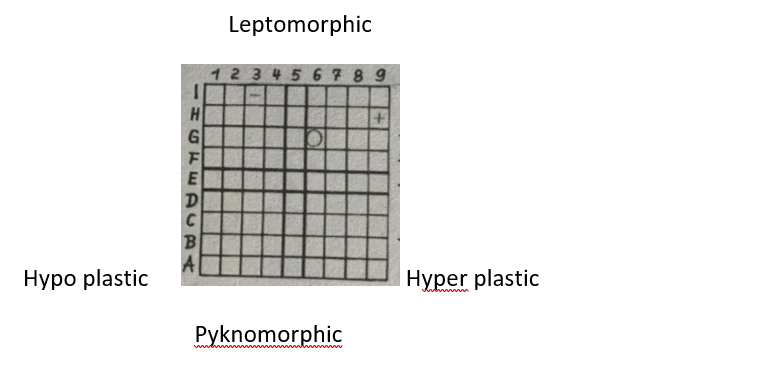
In Anthropology was created: Sport Type from Kohlrausch (1922/1923) during the Golden twenties of 19th century. Swimmer type, Asthenicer, Athleticer, all round fighter type, Constitutional Type: leptosome, pyknosome, metro morph etc. But: Not for children! The big step also for Anthropology of Sports and Auxology started with the examinations by Tanner (1964) during the sixties. Somatocharts (Sheldon 1940) of male and female Somatotype distributions for athletes (Heath and Carter 1967, Malina 1987)). We developed Standardized Photo documentation for Sportsmen to take measurements from photo (Wutscherk and Herm (1972), Herm 1980). Correlation between development rate of performance and biological age is significant, but since 1973 we recognized the problem that in talent selection, the influence that we collect in athletic sports the calendar older talents as well as the biological older in one age group! They have with 10 years more than 10% better performance - development is significantly advanced! That means: We have up to now estimate “Biological Age” and also to see how the Growth Dynamic of the talented sports children is (Herm 1973-1990). The aim was during the seventies to develop Norms for different age and different sports kinds, different growth types, for speed, for coordination, for endurance, you can say: for all conceivable parameters. Please have attention to changing bodies of athletes: Athletes today are generally taller and stronger than the first Olympians (Herm 1981, Olds 2016). But see also that the degree of change depends on the type of event.
Modern sprinters tend to be more muscular than early Olympians, but not significantly taller. The average height and weight of middle- and long-distance runners have not change greatly over time. But athletes competing in strength events today are significantly taller and weight considerably more than the first Olympians.There are so many aspects for the right talent selection in youth sports:
Sports Nutrition, Periodic of Training and Sports Performance in Youth Sports, Sensitive periods of brain during growth and development of children, the type of sport, the amount of training you do, the amount of time you spend doing the activity or exercise, which age to start with sports (Herm 1980, 2020). An answer to the question “what is Sports in relation with Electronic” is difficult! Termini like LAN, GPS-system, block chain and others like 3-D- Laser Scanning, Image of Miraco flexible printed circuits prior to de-panelization. Technology is Revolutionizing Talent Identification and Development for Sports Training!
But it is also a long-term performance development with very different steps and success.
For example during early childhood you have every time beside of the young sportsmen the parents which influence the development of the young talents!
Every time you have in the background the critical phases of the youth development like puberty. This time is very important for the future stability of the adult sportsmen.
For example in Germany normal children between 11 and 17 years less than 25 percent have physical activities, boys a little bit more! That means, to find children which enjoy participating sport is very less.
With six years we look wit beginning of the school to recognize the coordination and senses of balance. For sports you need more!
We have brought together tradition, talent and expertise in the selection of our exclusive Premier Cru line of Sportsmen.
During the seventeenth started an extensive data collection about talent identification, talent selection like training parameters like loading, biological development and lots of parameters. The aim was to develop young children with good health during Training to high performance.
Figure 10: Growth from birth to adolescents

There are differences in growth and development by sports children and non sports children. By non sports children is described a reduced physical activity as a global development. Physical activity affects the external skeletal robustness which decreased in German and international children of other countries (Rietsch, Godina, and Scheffler, 2013).
We need biological age also for Final Height Prediction. So you have another final height according the Biological Age by Girls and Boys. And it is for the different sports kinds do you have to estimate the final stature and for this you have usefully also to observe the biological age! Investigations in different sports kinds illustrated and demonstrated the increasing the stature by adult high level sports men in different sports kinds according the talents selection and looking for higher people and according the secular acceleration of the mankind over the period of the last 150 years (Herm 1977).
. Rotch (1910) proposed the grading of a child’s development as early as 1910. It seems characteristic, that this proposal was published in a journal of physical education.
Table 3: Suitable of Various Body Proportions to Particular Sports

2.3. Problem Future
The eSports, the electronically sports, the media Sport are unsolvable with computer technological development of the last thirty years since 1990 connected. We have to create unique terminological basics also in training, coaching and participating sports for this and find also parallels and different to the classical sport entered. An answer to the question “what is Sports in relation with Electronic” is difficult! Termini like LAN, GPS-system and others.
The realisation of practice sports kind must have its own sport determining Motoric activity as the big aim. The acclivity hast o happen for its own and the sport must be in compliance with certain ethic values guarantee a competition system.
For finding new ways of training and coaching we have to develop online- presence training or offline or live training. Live training is the classical training under electronically guidance of the coach.
3. Example of Material and Methods and Results
Material and Methods present and past
Figure 11: Somatocharts of male (a) and female (b) somatotype distributions for both U23 (unfilled icons) and OPEN (filled icons) athletes. Circles represent the mean somatotype for each age category.

Material and Methods Future
Darwinian “survival of the fittest” means that the bodies of Olympic athletes are becoming more specialised, more differentiated – and much more extreme.
Artificial intelligence - The lure of sports etc.
Figure 12: Basketball

Figure13: Shot-put

- Men's 100m sprint
- Jamaica's Usain Bolt has run the fastest 100m final at the Olympics, with a time of 9.63 seconds at the London Games in 2012.
- In the time Bolt ran the 100m, Thomas Burke - the gold medallist from 1896, with a time of 12 seconds - would have run 80.25 metres, almost 20 metres behind Bolt.
Figure 14: Marathon
It is to recognise the changing bodies of athletes
Athletes today are generally taller and stronger than the first Olympians. But the degree of change depends on the type of event.
Modern sprinters tend to be more muscular than early Olympians, but not significantly taller. The average height and weight of middle- and long-distance runners have not change greatly over time. But athletes competing in strength events today are significantly taller and weigh considerably more than the first Olympians.
We will have such development also during future how the history of body development has shown.
Figure 15: A youngster today no longer fits in a knight’s armour. We get bigger!
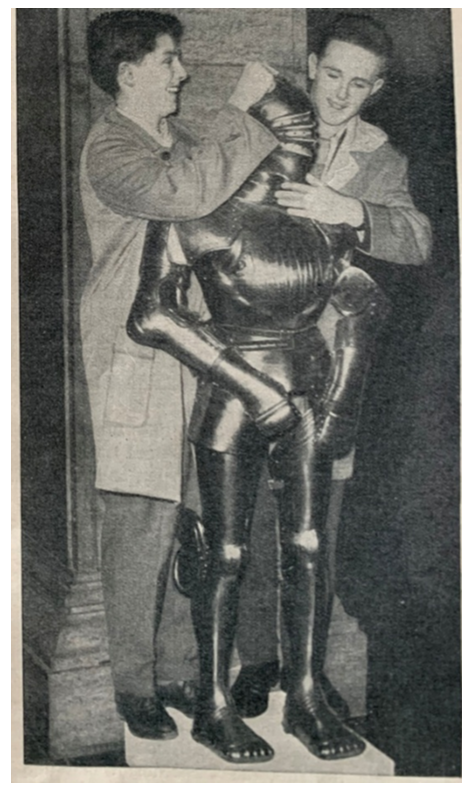
Figure 16: Today with mobile phone and Apps we have suddenly to see how our loading and lots of other parameters was.
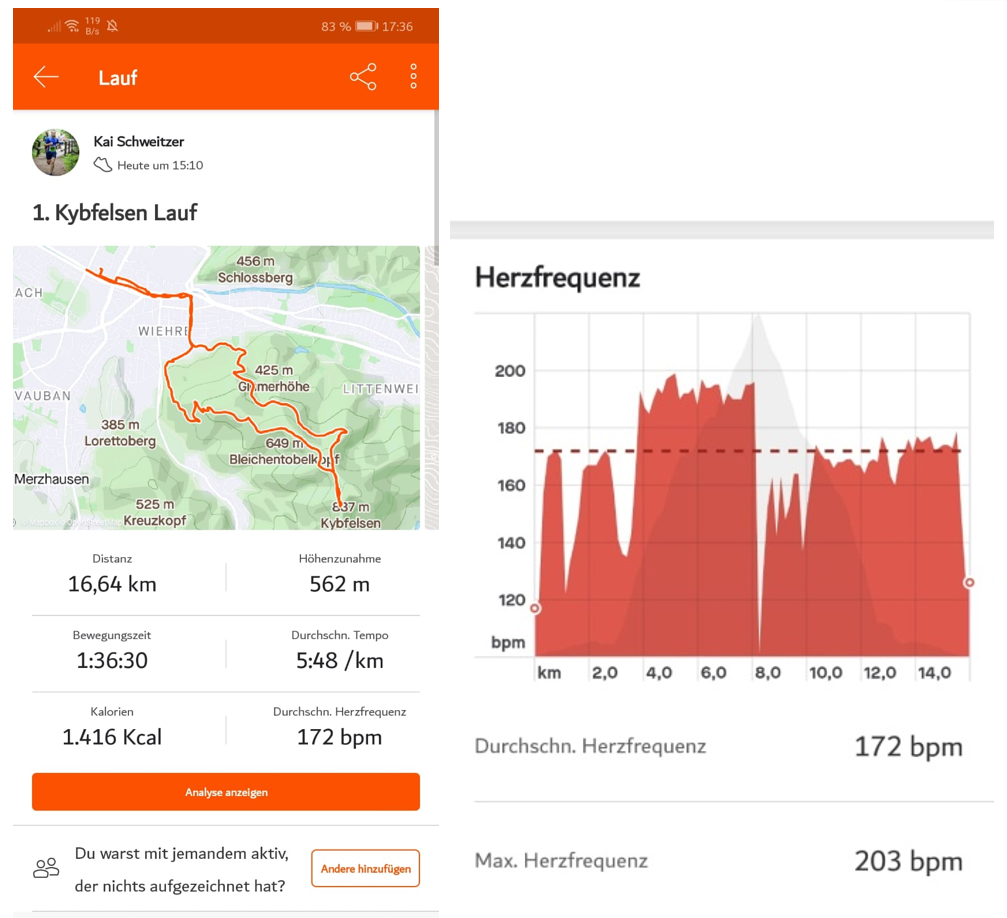
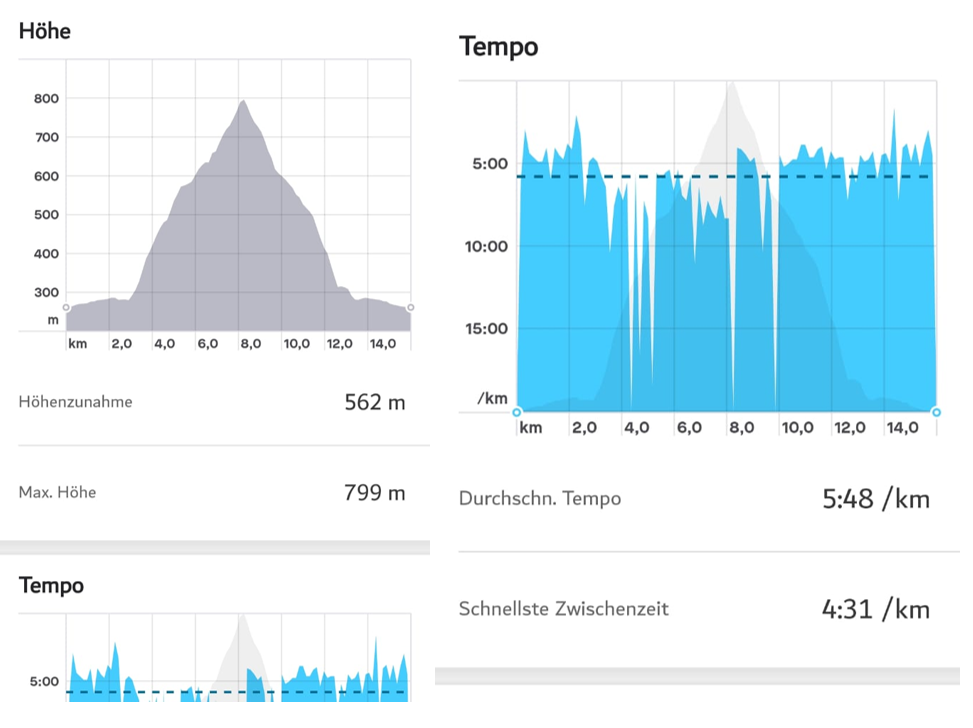
Now I will be back to my problem to beginning of my lecture: It was the Problem of Infant mortality!
Today we have for sports the problem for the future to discuss about Gene Doping also for children. It’s well known that in China the first gene manipulated children were born. That means that for sports it’s possible with genetic change present to manipulate better for enhancement of oxygen transfer enhancement mechanism has significant ramifications both in the youth sport and in competitive sports! In sports such as sprinting, tweaking genes to convert muscle fibres
to the fast type might also … protein that spurs development of oxy- gen-carrying red blood cells.
No Gene doping for children! If it is on the problem of athletes being criminalized!
Gen doping would be in some application forms develop a permanent effect that does not similar to discontinuing a medicament after a short time disappears!
4. Conclusion
Usefully are for modern children and youth high performance sport participation in the future are enormous physical and psychological conditions with use modern high technological equipments. You need a high qualified training and sports medicine care for do not exceed the border of individual load-bearing capacity and to guarantee in agreement with the personal development of a harmonious long term development of performance build up while maintaining stable health.
You don’t must select the biggest, strongest and fastest young athletes! You must identify and select the talented Childs.
You must not select the ones who already are elite young sports child, you must find the young girls and boys which have the characteristics needed for long term elite performance.
Please educate your coaches to understand the difference between selecting and identifying talent, and then the coach must teach and encourage them to develop it rather than try and win with it immediately.
1. Higher quality of talent identification and selection. 2. Higher quality of training especially for children and youth and in contrast to adult sports training. 3. Higher loading, specific coordination training and consequent warm up as well as stretching programme before and after training loading from beginning of children and youth sports. 4. Better technical equipments (online information service with sensors, tablets, Smartphone, GPS and trend to modern artificial intelligence with using of technology to revolutionizing sports training).
5. Outlook
You must have talent identifiers, no talent selector. Your clubs and schools will have larger numbers of skilled athletes to choose from, as well as additional healthier and well rounded kids.
Anthropocene (from Greek: anthropos = human and –zän (kainos) = new, unusual), that means a proposed geological epoch dating from the commencement of significant human impact on Earth's geology and ecosystems, including, but not limited to, anthropogenic climate change.
Developing the sports kids from the youngest ages, with particular attention given to helping the less skilled ones catch up technically to the stronger ones. Thus, when they finish their growth spurt (Tanner has spoken from catch up growth spurts), we have a much larger pool of adequately skilled individuals to choose from, instead of just the kids who happened to have facial hair at 12 but stopped growing at 13.
In Anthropology was created: Sport Type from Kohlrausch (1922/1923) during the Golden twenties of 19th century. Swimmer type, Asthenicer, Athleticer, all round fighter type, Constitutional Type: leptosome, pyknosome, metro morph etc. But: Not for children! The big step also for Anthropology of Sports and Auxology started with the examinations by Tanner (1964) during the sixties. Somatocharts (Sheldon 1940) of male and female Somatotype distributions for athletes (Heath and Carter 1967, Malina 1987)). We developed Standardized Photo documentation for Sportsmen to take measurements from photo (Wutscherk and Herm (1972), Herm 1980). Correlation between development rate of performance and biological age is significant, but since 1973 we recognized the problem that in talent selection, the influence that we collect in athletic sports the calendar older talents as well as the biological older in one age group! They have with 10 years more than 10% better performance - development is significantly advanced! That means: We have up to now estimate “Biological Age” and also to see how the Growth Dynamic of the talented sports children is (Herm 1973-1990). The aim was during the seventies to develop Norms for different age and different sports kinds, different growth types, for speed, for coordination, for endurance, you can say: for all conceivable parameters. Please have attention to changing bodies of athletes: Athletes today are generally taller and stronger than the first Olympians (Herm 1981, Olds 2016). But see also that the degree of change depends on the type of event.
Modern sprinters tend to be more muscular than early Olympians, but not significantly taller. The average height and weight of middle- and long-distance runners have not change greatly over time. But athletes competing in strength events today are significantly taller and weight considerably more than the first Olympians.There are so many aspects for the right talent selection in youth sports:
Sports Nutrition, Periodic of Training and Sports Performance in Youth Sports, Sensitive periods of brain during growth and development of children, the type of sport, the amount of training you do, the amount of time you spend doing the activity or exercise, which age to start with sports (Herm 1980, 2020). An answer to the question “what is Sports in relation with Electronic” is difficult! Termini like LAN, GPS-system, block chain and others like 3-D- Laser Scanning, Image of Miraco flexible printed circuits prior to de-panelization.
Technology is Revolutionizing Talent Identification and Development for Sports Training!
There is the big question: Are the changing bodies of children and young athletes? And you can see that the top level Athletes today are generally taller and stronger than the first Olympians, but also according the degree of change during growth dynamic, the loading during training and depends on the type of event.
How you know during the first Olympic Games 1896 in Athens participated 241athletes in 43 events from 14 countries. Today there we will find more than 11 000 athletes in more than 300 events. This is also a result of very early and extensive sport scientific investigations and care.
You must find children which have a little bit more ambition to excel in sports.
Technology is Revolutionizing Sports Training
Tracking Performance Using sensors placed on the body or in “smart clothing” (active wear with sensing fibres woven in), sports trainers can measure and track performance in real time. Almost anything about the athlete can be measured, from breathing and heart rate, to hydration and temperature. These live metrics can help the trainer determine what aspects each athlete needs to focus on more. Athletes are unique, and real-time individual performance measurements can set a more precise and accurate baseline. During practice, trainers can read live metrics and decide when it’s time to rest, stretch or train harder. Lasers and GPS have been incorporated into various aspects of the sports training world. Instead of relying on times and splits, trainers can measure the exact position, distance, velocity and acceleration of athletes to better understand where they can improve. Identifying more intricate data leads to improved performance with less stress and less chance for injury.
Perfecting Athletic Movements
Mounir Zok, the Director of Technology and Innovation for the U.S. Olympic Commission, has watched technology change and mold sports for the better. He claims that sports technology is so advanced that it can create a ‘digital code’ for winning the gold medal. What he means is: data collected and compared can ultimately translate into a gold medal performance. Technology has increased an athlete’s prowess simply because it magnifies performance-related actions and events that have been previously unseen.
For example, cyclists can wear heads-up display (HUD) glasses that flawlessly deliver heart rate, speed, incline and other relevant cycling information. Metrics such as these can help the cyclist focus and improve because they can make adjustments mid ride.
Swimmers and divers participate in an extremely technical sport and have adapted sensors into their practices as well. When swimming or diving, the sensors measure more than the usual time and effort metrics. They map movements like rotational speed, dive angle, leg movement and hydrodynamics. Observing movements like this is groundbreaking, and allows trainers to help athletes perfect their movements. They may only shave milliseconds off their performance, but a millisecond in a race can be all the difference.
In today's episode, we take a deep dive into the realm of advanced self-quantification techniques for athletes. During our discussion, you'll discover:
-How measures the oxygen levels in his muscles…
-Why sweat and tears are the new goldmine in self-quantification…
-How an electronic, biodegradeable tattoo can be used to detect muscle and nervous system activity…
-The fascinating emergence of new contact lenses for analyzing fluids in the eye…
-Socks that can measure your blood lactate levels…
-Headbands that can prime the motor cortex for enhanced performance…
-How the US Women's Track Cycling team is using artificial intelligence to enhance training…
-How to strike a balance between the fine art and the nitty-gritty science of reading the body…
-Whether you need to be concerned exposure to excessive bluetooth or wifi radiation from self-quantification devices…
-And much more…
Resources from this episode:
- The Flexible electronics
- The Neuroscience of Learning is the cooperation between muscle and brain and create strengthen motor pathways faster
- Sports technology
Figure 17: TIME Magazine cover, biodegradeable tattoo
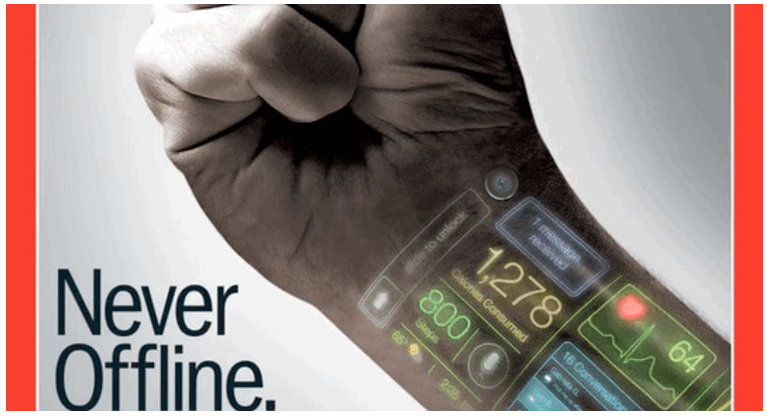
Figure 18: Image of Miraco flexible printed circuits prior to de-panelization.

Figure 19: bluetooth or wifi radiation from self-quantification devices…

It includes research, consulting and sports project management. It means: Active Sourcing, Data-Driven-Recruiting, On-Boarding-Processes and personal advice in different sports kind. It is to have a look to Requirement analysis, Sports- and competitive analysis, Data-Driven Recruiting, Talent Pool and network, Fit –Add Analyses – all with the most modern examination methods. Important is Long-Term Development, Not Short-Term Success!
So is the call given by Rabindranath Tagore, to give best level to attract the attention of young learners and to put forward the urgent need for studying the indigenous culture!
Key words: Anthropology of Sports, Talent Selection, Biological development, Growth Dynamic Trainings Loading, Periodic, Children and Youth Sports
Literature:
Conrad, K. (1963):Der Konstitutionstypus. Springer, Berlin-Göttingen-Heidelberg.
GutsMuths (1793): “Gymnastik für die Jugend” (Gymnastics for youth).
Herm, K.-P. (1980): Grundlagen der Sportanthropometrie. Fotodokumentation Biologische Altersdifferenzierungen in ausgewählten Sportarten. Deutsche Hochschule für Körperkultur, Leipzig
Herm, K.-P. (1981): Die Veränderung der Körperbaumerkmale der Teilnehmer an den Olympischen Spielen in den vergangenen Jahrzehnten. In: Biologische Gesellschaft der DDR –Sektion Anthropologie- Tagungsbericht, 17.Arbeitstagung „Mikroevolution bei Homo sapiens“. Magdeburg : 56-65.
Herm, K.-P. (1988): Methodische Schritte zur Bestimmung des biologischen Alters. In: Sportmedizinische Einflussnahme zur Sicherung der Belastbarkeit des Stütz- und Bewegungssystems (SBS) Berlin 1988, S. 152-159
Herm, K.-P. (1990): Die Wachstumsdynamik als ein Aspekt der Kennzeichnung von anthropometrischen Leistungsvoraussetzungen. In: Sport und Wissenschaft, Academia, Leipzig 2, 53-61.
Herm, K.-P.(2020): Modern aspects of Talent selection – a process from youth to adult sports.
Human Biology Review, ISSN 2277 – 4424
Herm, K.-P. , Roy, K. (1997): Experiences & Talent Selection of Young Sportsmen in German and Indian Population. Differences and Similarities. Athletic Asia. Vol 32, 1, 41-53.
Kaur Talwar, R. (2010): Formation of Norms for Body Development Index in the Assessment of Development Age. Faculty of Sports Sciences, Dept. of Anthropometry SAI NSNIS, Patiala
Malina, R. M.: Human Growth, Maturation and regular physical activity. Advances in Paediatric Sport Sciences. Illinois, 1 (1987).
Muthiah, C.M. (1976): Besonderheit des Kinder- und Jugendsports in Indien. DHfK Leipzig, Diss.A
Olds, T.(2016): Survival of the fittest: the changing shapes and sizes of Olympic athletes. https://theconversation.com/survival-of-the-fittest-the-changing-shapes-and-sizes-of-olympic-athletes-63184
Tanner, J. M. (1964): The Physique of the Olympic Athlete, George Allen and Unwin, Ltd., London,
Tanner, J. M., Whitehouse, Ca. (1982) Atlas of Children's Growth: Normal Variation and Growth Disorders, Academic Press, U.S.A.
Wutscherk, H., Herm, K.-P. (1972): Zu den Möglichkeiten der Abnahme Anthropometrischer Maße von Kleinbild-Fotografien. Theorie und Praxis Leistungssport, Leipzig, 4, 121-133.
Address of the Author: IBS _ Institut für Bewegung und Sportanthropologie D-32549 Bad Oeynhausen Kortenweg 7 Fon+49+ 172 1933059 e-Mail: ibs.herm@t-online.de PD Dr. habil. Dr. h.c. Retd. Professor KLAUS-PETER HERM – GERMANY

